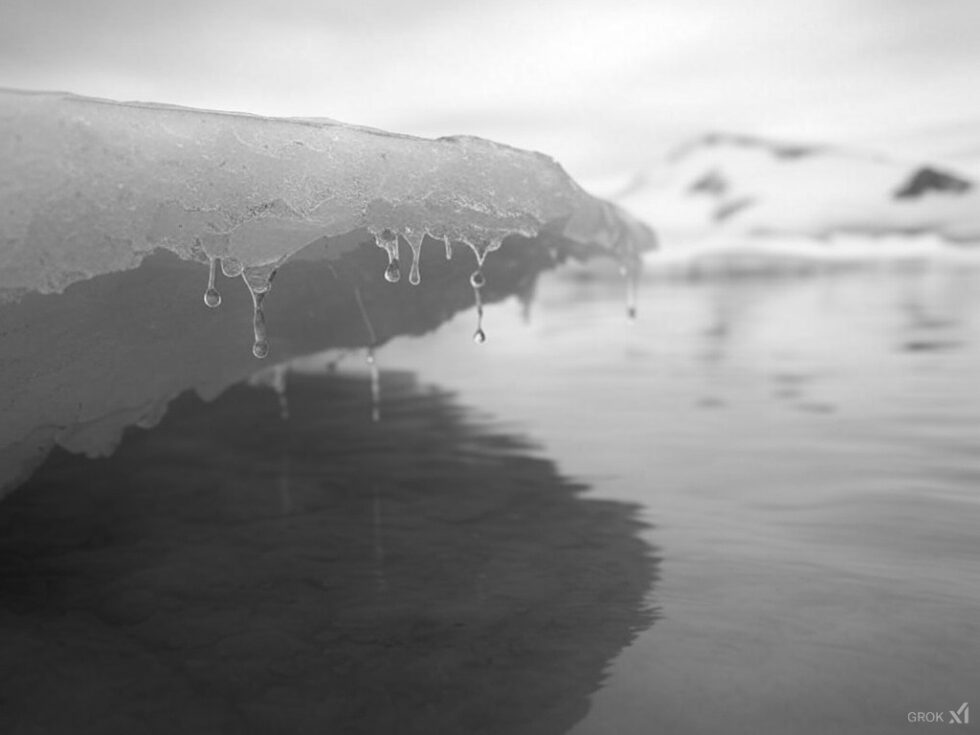
In 2065, the world awoke to a dramatically altered reality. The vast ice sheets of Antarctica and Greenland, which had stood as silent sentinels for millennia, finally succumbed to relentless global warming. These once-mighty ice caps, repositories of ancient history and climate, melted into the oceans, raising sea levels by an unprecedented 70 meters. Humanity was thrust into a new epoch, forced to adapt to a transformed Earth.
Coastal cities, the jewels of human civilization, were the first to feel the impact. New York, Tokyo, London, and Mumbai—all became modern-day Atlantises, submerged beneath the rising tides. The exodus from these cities was chaotic and desperate, as millions sought refuge inland. Governments, overwhelmed by the sheer scale of the crisis, struggled to respond. The global economy, intricately linked to these urban centers, teetered on the brink of collapse.
Inland regions, once sparsely populated, became the new frontiers of human settlement. The Great Plains of America, the Siberian tundra, and the Australian Outback saw an influx of people and resources. New cities rose from the dust, designed with sustainability in mind. Vertical farms, solar panels, and wind turbines dotted the landscape, symbols of humanity’s resilience and ingenuity. Yet, the scars of the past were not easily forgotten. The loss of cultural heritage, the displacement of millions, and the environmental devastation weighed heavily on the collective conscience.
Amidst the turmoil, a new global alliance emerged, driven by the realization that no nation could face this crisis alone. The United Nations, once a forum for diplomatic posturing, transformed into a hub of cooperation and innovation. Scientists, engineers, and policymakers from around the world collaborated on ambitious projects to stabilize the climate and restore balance to the planet. Geoengineering initiatives, such as solar radiation management and carbon capture, were pursued with urgency and caution.

As the years passed, the world began to heal. The oceans, though swollen and unfamiliar, became a source of new opportunities. Floating cities, marvels of modern engineering, dotted the seas, providing homes and livelihoods for millions. Marine biodiversity, initially threatened by the rapid changes, adapted and flourished in unexpected ways. Coral reefs, once bleached and barren, evolved into vibrant ecosystems, teeming with life.
Humanity, too, adapted. The crisis had forged a new sense of unity and purpose. The divisions of the past, though not entirely forgotten, were overshadowed by the shared challenges of the present. Education and technology became the cornerstones of society, empowering individuals to contribute to the global effort. The arts, long a reflection of human experience, captured the hope and resilience of this new era, inspiring generations to come.
In this transformed world, the lessons of the past were etched into the fabric of society. The melting of Antarctica and Greenland served as a stark reminder of the consequences of unchecked environmental degradation. Yet, it also demonstrated the power of human innovation and cooperation. As the sun set on the horizon, casting a golden glow over the floating cities and verdant landscapes, there was a sense of optimism and determination. Humanity had faced the abyss and emerged stronger, ready to embrace the challenges and opportunities of the future.
The melting of the ice had irrevocably altered the course of history, but it had also ignited a renaissance of human spirit and creativity. The world was different, but it was still home—a testament to the enduring resilience of life on Earth.





Good read. Hopeful message
TdE35CFtsGC